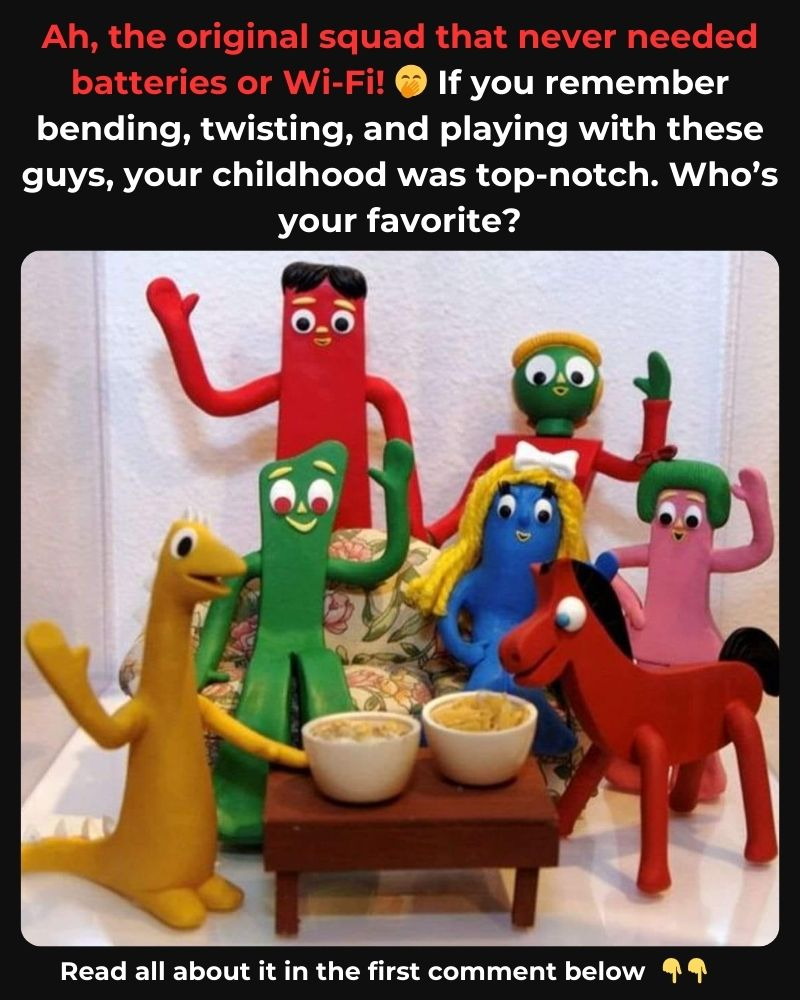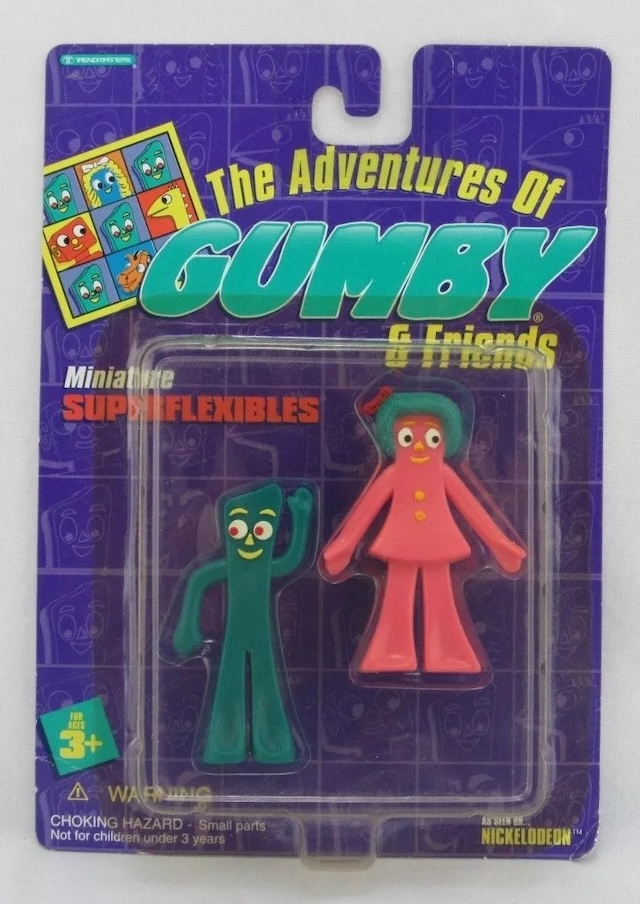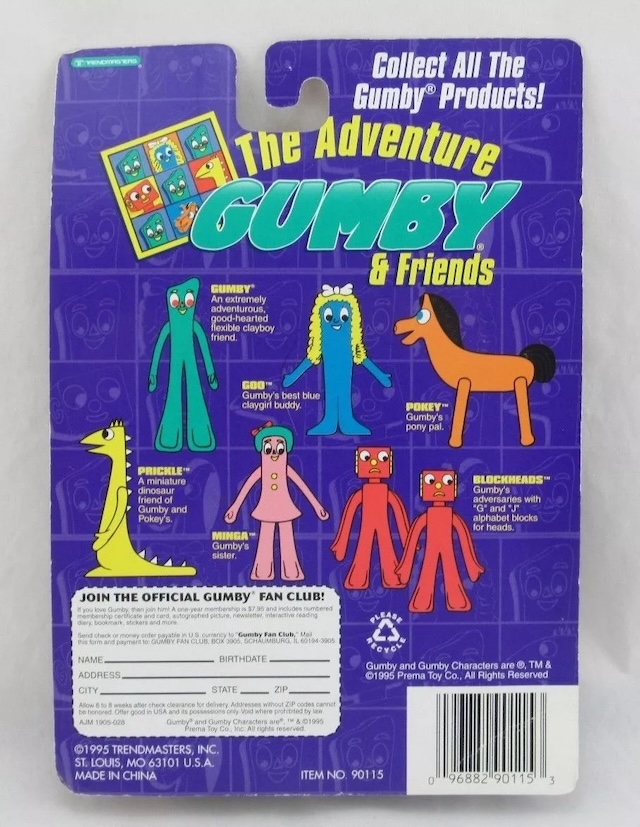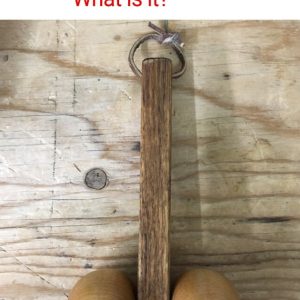Remember that quirky green guy with the flexible body and curious heart? If you just had a wave of childhood memories rush over you, you’re not alone. Gumby and Friends weren’t just another Saturday morning cartoon — they were a movement. A piece of television history that made imagination feel real and playtime feel endless. If you grew up watching these clay characters come to life, you were part of something magical.
Let’s take a trip down memory lane and revisit the origin, charm, and lasting legacy of one of pop culture’s most beloved animated crews.

The Humble Beginning of a Clay Legend
Before Pixar. Before CGI. There was a green blob of clay named Gumby.
Back in the mid-1950s, Art Clokey had a vision: bring storytelling to life through clay. It all started with a short film called Gumbasia, a playful nod to Disney’s Fantasia — only with handcrafted clay and stop-motion animation. That little green guy in Gumbasia became the face of The Gumby Show, which first aired in 1955.
Clokey’s concept was simple but powerful. Use clay figures to tell stories of friendship, adventure, and curiosity — and in the process, inspire kids to dream bigger. Gumby’s bright green color symbolized life, imagination, and endless possibilities. And just like that, a TV icon was born.
Video: Gumby – The Pokey Express
Why Kids Couldn’t Get Enough of Gumby
Let’s face it — there was something mesmerizing about watching Gumby stretch, slide, and dance across the screen. In an age before fast-paced animation and high-budget effects, Gumby and Friends felt like magic in motion. It was weird. It was whimsical. And it worked.
Kids loved the way Gumby and his orange horse buddy, Pokey, dove into books and popped into different worlds. One episode they were in the Wild West, the next they were exploring the moon. Every twist of their story felt like a new toy box had just opened.
And parents? They loved the show too. It was wholesome, safe, and filled with gentle life lessons — all without the chaos of modern cartoons. It was imagination with a moral compass.
Meet the Cast: Colorful Clay with Real Character

What really made Gumby and Friends unforgettable wasn’t just the animation style — it was the characters. Each figure brought something totally unique to the screen, and together, they created a clay dream team.
Gumby was the curious hero — always eager to learn and help others.
Pokey, the witty orange horse, brought skeptical realism but stayed loyal no matter what.
Prickle, the yellow dinosaur, saw himself as a detective or adventurer, always ready for mystery.
Goo, the blue mermaid-like figure with shapeshifting abilities and a golden bow, added flight and fun to the crew.
The Blockheads — Gumby’s mischievous red-headed enemies — were always causing mayhem and plotting wild schemes, a perfect clay embodiment of chaos.
Each character, simple in design but rich in personality, taught kids the power of friendship, teamwork, and embracing differences.
Why Gumby Was More Than Just a Show

At a glance, Gumby and Friends was just a clay animation series. But under the surface, it was a milestone in creative television. Art Clokey’s dedication to stop-motion animation set a precedent for generations to follow. Every second of screen time required patience, precision, and passion.
Gumby wasn’t just fun to watch — he became a toy, a symbol, and eventually, a pop culture reference that kept popping up in unexpected places. Eddie Murphy’s legendary SNL sketch, toy commercials, music videos — Gumby’s green silhouette became instantly recognizable.
Fun Facts That’ll Blow Your Mind
- Gumby’s color was chosen to represent growth and vitality — a nod to Clokey’s love for nature.
- Pokey’s voice? That was Clokey himself lending his talents to his loyal clay companion.
- The Blockheads were inspired by real-life frustration — Clokey designed them to represent stubborn, uncooperative people.
- Gumby’s stretchable toys became one of the best-selling novelty figures of the 20th century.
- You can still spot Gumby cameos in pop culture, from The Simpsons to Robot Chicken.
The Stop-Motion Legacy Gumby Helped Build

Before Tim Burton, before Aardman Animations, before Coraline, there was Gumby. Art Clokey’s early experiments with claymation shaped an entire generation of animators. He proved that you didn’t need a massive budget or advanced tech — just heart, creativity, and a whole lot of patience.
Gumby helped make stop-motion a respected art form. Every frame was handmade. Every movement, intentional. Watching Gumby was like watching a living sculpture dance across the screen.
Why Gumby Still Lives in Our Hearts
If you ever played with a bendy Gumby toy or rewatched an old episode online, you know that feeling — pure, sweet nostalgia. Those squeaky clay footsteps, the gentle music, the surreal yet comforting storylines — it all just clicks.
In today’s high-speed, hyper-edited media world, Gumby and Friends feels like a breath of fresh air. It reminds us of when joy came from simple stories and colorful shapes. It brings us back to a time when we believed anything was possible — as long as we had imagination.
Gumby’s New Life in the Digital Age
Video: Gumby – Rain Spirits
Here’s the cool part — Gumby’s not done yet. Thanks to platforms like YouTube and streaming services, new generations are discovering the magic. Schools use Gumby episodes to teach stop-motion animation. Artists cite Clokey as an early influence. Collectors still trade bendable Gumby figurines with pride.
The clay may be old, but the charm? Still fresh as ever.
Conclusion: Gumby Isn’t Just Nostalgia — He’s a Legacy

Gumby and Friends may have started as a humble clay experiment, but it quickly became a phenomenon. For decades, these bendy figures inspired imagination, creativity, and laughter. Whether you remember watching it on TV with a bowl of cereal or playing with the toys on your bedroom floor, Gumby left a mark that time hasn’t erased.
He’s more than a green blob with a smile. He’s a symbol of what happens when storytelling meets heart. And even now, in an age of AI and VR, Gumby still proves that the simplest stories are sometimes the ones that last the longest.


